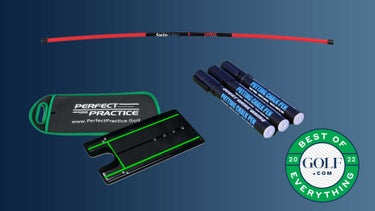LIV Golf is looking younger as it adds new players to the team rosters, the most recent the Cleeks announcing it was signing Frederik Kjettrup of Denmark, who finished among the top 10 in the PGA Tour University ranking at Florida State.
Struggling with three-putts? Here’s what a Top 100 teacher says you should do

Three-putting is frustrating for any golfer, but Top GOLF 100 Teacher Jeff Smith has some tips to identify the cause and correct it.
The post Struggling with three-putts? Here’s what a Top 100 teacher says you should do appeared first on Golf.
Three-putting is frustrating for any golfer, but Top GOLF 100 Teacher Jeff Smith has some tips to identify the cause and correct it.
The post Struggling with three-putts? Here’s what a Top 100 teacher says you should do appeared first on Golf.
There’s perhaps no affliction more frustrating for golfers than three-putting.
It’s a lot of work to get yourself into position on the green, and turning a look at birdie or par into a bogey or worse is incredibly demoralizing.
Fixing your putting is a quick way to improve your overall game — not to mention your sanity. And at this week’s Top 100 Teacher Retreat at Talking Stick Resort in Scottsdale, Ariz., I asked instructor Jeff Smith, who splits his time between Eagle Springs Golf Club in Colorado and Timbergate Golf Course in Indiana, for his advice.
“The first thing you have to do is find out out why you’re three-putting,” he said. “Is it the fact that you’re missing the shorter one, or are you not leaving yourself with a short enough first putt that really helps? Is it the first putt that’s the problem, or the second?”
Fixing the first putt
Players who struggle with the first putt may find that they frequently hit the ball too hard or too soft, leaving themselves with another potentially lengthy comeback putt with a higher miss ratio, says Smith.
If that sounds like you, Smith says there’s a few things you can look at, including wrist and arm movement, which could be having too much of an effect on your stroke.
Smith then recommends spending time on the putting green putting at non-hole targets. It’s important to picks targets that require different distances and speeds so it’s obvious where your distance-control deficiency lies. Once you get a handle on distance control, the next step is doing it under pressure.
Smith suggests trying to land 10 putts in a row within a foot of your selected target. Once you nail that, you’ll be well on your way to banishing those three-putts for good.
Fixing the second putt
But what if your distance control is generally on point and your second putt is the one causing you grief? Smith has a remedy for that too.
“The first thing I want to look at: Is the speed control the right amount? And then, can they start the ball on line?” Smith said.
Smith suggests that if this is the case for you, the problem might be your read. Or, perhaps you aren’t aimed correctly from the get-go.
Aim and speed control are essential, especially with short putts, and once you isolate your issue, you’ll be ready to start logging fewer putts and lower scores.
Need some help honing in on your aim and alignment on the green? Check out the training tool below.
All of our market picks are independently selected and curated by the editorial team. If you buy a linked product, GOLF.COM may earn a fee. Pricing may vary.
Indoor Performance Pack
$99.99
View Product
Need help unriddling the greens at your home course? Pick up a custom Green Book from 8 AM Golf affiliate Golf Logix.
The post Struggling with three-putts? Here’s what a Top 100 teacher says you should do appeared first on Golf.


